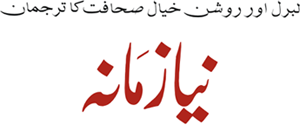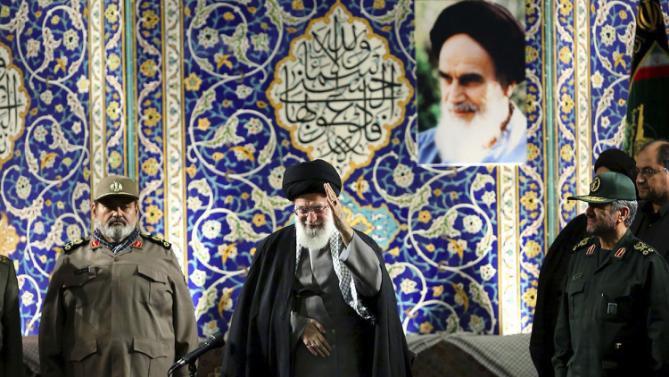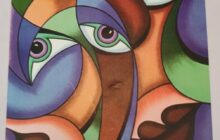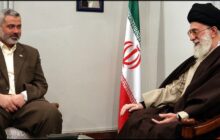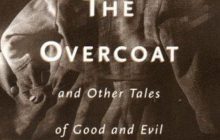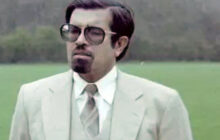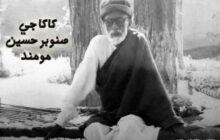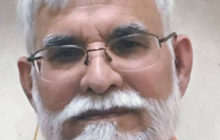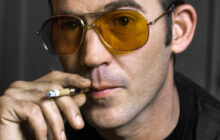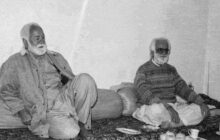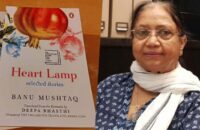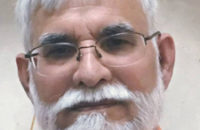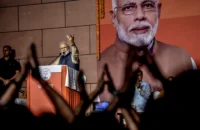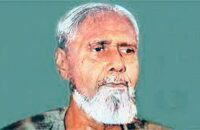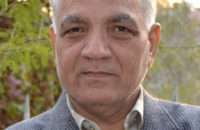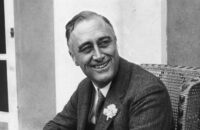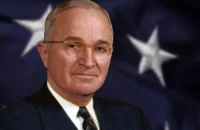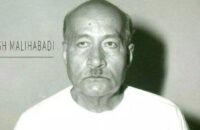Jews have good reason to be wary of Tehran’s rhetoric.
By Shahrzad Elghanayan
Until Iran’s leaders decide to get their facts straight about Jews, they should stay quiet on the subject. No, I’m not talking about former Iranian president Mahmoud Ahmadinejad’s Holocaust-denying antics. These days, as Iran’s leaders try to soften their image to seal a deal to limit the country’s nuclear program in exchange for lifting sanctions, they’re peddling a revised and rosy version of Iran’s own 2,600-year Jewish history.
Asked by NBC’s Ann Curry during recent talks in Switzerland whether Iranian leaders understand why Jews have been wary of their rhetoric, Foreign Minister Mohammad Javad Zarif said, “We have a history of tolerance and cooperation and living together in coexistence with our own Jewish people, and with — Jews everywhere in the world.”
That’s not quite right. Iran’s Jews did have something of a golden age relatively recently, but Zarif, in his role as representative of a regime that eschews pre-revolutionary Iran, can’t take credit for it. That era was a brief period when the conservative Shiite clergy were stripped of their power — after the Constitutional Revolution of 1906 gave Iranians of all religions and ethnicity equal rights, and before Ayatollah Ruhollah Khomeini came to power in 1979.
Jews have lived in Iran since 586 B.C. In the 16th century, conservative Shiite scholars and clergy under the Safavid dynasty had restrictions placed on all minorities, including Jews, to bar them from economic activity and to prevent them from passing their “ritual impurity” to Muslims: Don’t open shops in the bazaar, don’t build attractive residences, don’t buy homes from Muslims, don’t give your children Muslim names, don’t use Muslim public baths, don’t leave your house when it rains or snows, don’t touch anything when entering Muslim shops. Jews weren’t protected by the legal criminal system, but they could convert on the spot to save their lives if attacked by Muslims. There were short periods of reprieve here and there but as a whole, life was pretty grim for the next several centuries. (For more on Jewish history in Iran, see Houman Sarshar’s “Esther’s Children.”)
Late in the 19th century, French and British Jews lobbied to establish schools for Jews, and eventually the Alliance Israelite Universelle, a Paris-based international Jewish organization, funded a network of schools in the country. After Reza Shah founded the Pahlavi dynasty in 1925, he started a modernizing spree in which Jews participated and prospered. By 1979, according to David Sitton’s study of Sephardic Jewish communities, 80 percent of Iran’s estimated 80,000 to 100,000 Jews were middle class or higher, and 10 percent were part of the economic elite. Jews were not only successful businessmen, but also prominent university professors, journalists and doctors.
It was during that window of relative Jewish affluence that my grandfather Habib Elghanian, born in 1912, became one of Iran’s most famous industrialists, after he and his brothers introduced the plastics industry to the country in the late 1940s. In 1959, he was elected the chairman of the country’s Jewish association.
Still, some members of the clergy were uncomfortable that a Jew had become so successful. In 1962, when my family built the country’s first private sector high-rise, the 17-story Plasco Building in Tehran, Shiite cleric Mahmoud Taleghani objected to the idea that a Jew had built the tallest building of its time in Iran.
Khomeini’s protests went further than Taleghani’s. Khomeini railed against the White Revolution, a series of economic and social reforms Reza Shah’s son Mohammed Reza Pahlavi started in 1963. His attacks on the shah’s modernization efforts were also aimed at Israel, Jews and Baha’is. “The shah takes so many of his cues from Israel that we wonder if he is not a Jew himself,” Khomeini said during one speech against the reforms. In a 1964 address, Khomeini offered his antidote to westernizing Iran. “The objective is Islam,” he said. “It is the country’s independence; it is the proscription of Israel’s agents; it is the unification of Muslim countries. The entire country’s economy now lies in Israel’s hands; that is to say it has been seized by Israeli agents. Hence, most of the major factories and enterprises are run by them.” That speech singled out two people in particular: One was my grandfather, and the other was a famous Baha’i industrialist, Habib Sabet.
When Khomeini returned from exile in February 1979 as the head of the Islamic revolution, my grandfather was among the first civilians he went after. On May 9, 1979, my grandfather was executed after a 20-minute trial on trumped-up charges that included being a “Zionist spy.” The Revolutionary Court did not allow my grandfather to have a lawyer. After a firing squad killed him, the new regime stole what he had spent his lifetime building. (Most of the rest of my family had already left Iran by then.) The execution prompted Sen. Jacob Javits (R-N.Y.) to sponsor a resolution condemning human rights abuses in Iran – which would prove to be a key moment in souring diplomatic relations between the U.S. and the new regime.
Khomeini’s government instituted measures ensuring that from the earliest days in school, children were programmed into the party line. Salman Sima, a self-described moderate Muslim, says that every morning beginning in grade school, he had to chant “Death to America” and “Death to Israel.” He says his religion teachers would say things like, “if you do something wrong, you will die a Jew.” The indoctrination was so effective on him that he didn’t realize he suffered from an ingrained anti-Semitism himself until three years ago — at age 28. Imprisoned three times in Iran for his student activism, he now lives in Toronto. “I realized that even as a human rights activist, I had hidden anti-Semitic feelings,” Sima told me. “It was the result of having been brainwashed since an early age.” Clearly, this sort of inculcation doesn’t work on everyone, but it’s disturbing nonetheless. And it does seem to work on some: Just this week, an Iranian Web site owned by a member of Parliament published a story accusing Jews of killing non-Jews to use their blood for rituals, an age-old trope.
In his rosy tableau, Zarif points to what he says are Iran’s 20,000 Jews, which he says constitutes the largest population of Jews in the Middle East outside Israel. (Iran’s latest census counted only 8,756 of them, and Turkey claims to have 20,000, as well.) What he omits is that while Iran’s population rose from over 37 million in 1979 to over 77 million today, the Jewish population has plummeted from an estimated 80,000 to 100,000 in 1979. As Khomeini’s popularity was growing before his return to Iran from exile, some Jews left Iran with their assets; many fled after my grandfather was executed, and others followed in the early ‘80s.
Today, we’re spread out, mostly in the United States and Israel and also in Europe and Canada. Some started their lives from scratch. Many have done extremely well, others less so. But even after 35 years, for some exiled Iranian-Jews, the pain of missing home remains sharp.
The relatively few Jews who remain in Iran tell foreign journalists they have no complaints about daily life. As Zarif points out, they are free to attend synagogues. They also conduct their businesses and continue to have a representative in parliament, as they did before the revolution. But like all Iranians who are not government cronies, they know the rules and boundaries of coexistence. For the past three decades, they have uttered monolithically anti-Israel opinions. They can’t hold high office or teach in universities.
Listening to the foreign minister’s version of Iranian-Jewish history makes me wonder what the nation’s youth is learning about its past. Maybe now that Iran is working to earn the international community’s trust, it’s finally time for its leaders to acknowledge past injustices.
CORRECTION: This post originally incorrectly stated that Iranian-Jewish philanthropists, with the help of Israeli organizations, opened schools in Iran in the late 19th century. In fact, the Alliance Israelite Universelle, which funded the schools, was based in Paris.
Shahrzad Elghanayan, a freelance photo editor and writer, is working on a book about her grandfather, Habib Elghanian.
